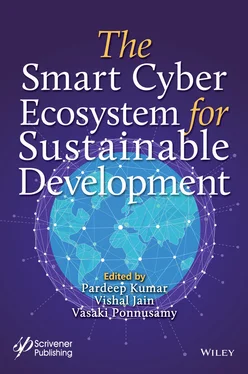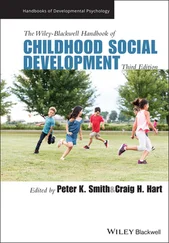1 ...8 9 10 12 13 14 ...26 11. Agarwal, T., Zigbee wireless technology Architecture and Application. Online URL https://https:elprocus.com/what-is-zigbee-wireless-technology-architecture-and-its-application.
12. Acosta, G., The Zigbee Protocol online URL: https://www.netguru.com/codestories/the-zigbee-protocol.
13. Shelby, Z., Hartke, K., Bormann, C., The Constrained Application Protocol (COAP), in: Internet Engineering Task Force (IETF) , Standard Track, Bremen, Germany, 2014.
14. Tezer, O.S., An Advanced messaging queuing protocol walkthrough , Digital Ocean–Online, 2013.
15. Sulthana, M.R., A Novel Location Base Routine Protocol for 6LoWPAN, a developer cloud environment.
16. Feng, A., A Survey of Protocols and Standards for Internet of Things. Adv. Comput. Commun ., 1, 1, pp. 1–21, 2011.
17. Egan, M., What is NFC? How to use NFC on your smartphones , Techadvisor, (online), Euston Road, London, 2015.
18. Tutorialspoint – Online, Wireless Communication – Bluetooth.
19. Čolakovića, A. and Hadžialićb, M., Internet of Things (IoT): A review of enabling technologies, challenges, and open research issues , vol. 144, pp. 17–39, Elsevier - Computer Networks, Amsterdam, The Netherlands, 24 October 2018.
20. Gomathi, R.M., Hari Satya Krishna, G., Brumancia, E., Mistica Dhas, Y., A Survey on IoT Technologies, Evolution and Architecture. 2nd International Conference on Computer, Communication, and Signal Processing (ICCCSP 2018) .
21. Arduino Store, Online https://store.arduino.cc/usa/arduino-uno-rev3(image download).
22. Arduino Integrated Development Environment-IDE https://www.arduino.cc/en/Main/Software.
23 Learning Internet of Things, in: Chapter – 01 Preparing our IoT Project , pp. 11–33, Peter Waher, PACKT Publishing, Birmingham – Mumbai, 2015.
24. Raspberry Official Website - https://www.raspberrypi.org/downloads/(for image and software)
25. Official Web site – Python - https://www.python.org(for documentation and download)
26. Vermesan, O., Friess, P., Guillemin, P., Gusmeroli, S. et al ., Internet of Things Strategic Research Agenda, in: Ch.03 - Internet of Things-Global Technological and Societal Trends , River Publishers, Denmark, 2011.
27. Le, D.-N., Van Le, C., Tromp, J.G., Nguyen, G.N. (Eds.), Emerging technologies for health and medicine_ virtual reality, augmented reality, artificial intelligence, internet of things, robotics, industry 4.0 , Scrivener Publishing, Wiley. October 2018.
28. Agriculture 3.0 or (smart) agroecology, online: https://www.grain.org/en/article/6280-agriculture-3-0/-or-smart-agroecolog
29. AgriSens:Development of Sensor based Networking System for Improved Water Management for Irrigated Crops, A Project Funded By MHRD, Govt. of India, Undertaken by SWAN, department of CSE & AGFE, IIT Kharagpur, official website: www.iitkgp.ac.in
30. http://www.gartner.com/it-glossary/internet-of-things/- visited on 22/07/2020 at 5.30 p.m.
31. https://en.oxforddictionaries.com/definition/sensor- visited on 26/07/2020 at 4 p.m.
32. https://businessdictionary.com/definition/sensor.html- visited on 26/07/2020 at 4.30 p.m.
33. http://www.electronics-tutorials.ws/io/io_1.html- visited on 26/07/2020 at 4.30 p.m.
1 *Corresponding author: tejas_ghadiyali@rediffmail.com
2
AI for Wireless Network Optimization: Challenges and Opportunities
Murad Abusubaih
Department of Electrical Engineering, Palestine Polytechnic University, Hebron, Palestine
Abstract
Nowadays, Artificial Intelligence (AI) and Machine Learning (ML) are gaining increased attention. The huge amount of information coupled with a plethora of multimedia applications have posed a great challenge to scientists and engineers to handle the big data and manage various resources. All of this prompted researchers to think of innovative ways to make best use of AI and its tools to address existing and emerging problems in the field of data science and data networks. This had an impact on developing the concept of self-organized networks and systems.
This chapter discusses a state-of-art of AI concepts and tools applied to wireless networking. We firstly introduce the AI concepts. We review self-organizing and cognitive networks. Then, we introduce the ML approach. We discuss how AI and ML would contribute to the management of wireless networks as well as the optimization of their operation. To help researchers gain a focused knowledge on the role of AI concepts in facilitating solutions to various problems in wireless networks, we discuss different areas and challenges where AI and ML have been used effectively to overcome those challenges.
Keywords :Artificial intelligence, machine learning, wireless networks, cognitive networks
Artificial Intelligence (AI) is a field of science that is constantly evolving and accelerating. It has recently witnessed great momentum in being one of the scientific fields that have become affecting all sciences. AI has transformed the research path to new directions in order to provide effective solutions to many problems facing all science and engineering fields. In fact, the concepts of AI go back to the 1940s and 1950s, when scientists from different disciplines explored the possibilities of artificial brains and defined machine intelligence.
AI systems can be divided into three types: analytical AI, human-inspired AI, and humanized AI. Analytical AI has characteristics compatible only with cognitive intelligence, where new knowledge and decisions are generated through learning and based on previous experience. Human-inspired AI is a mix of cognitive and emotional intelligence. Human emotions are understood, in addition to the cognitive elements, and then used in determining decisions. Humanized AI uses cognitive, emotional, and social intelligence, capable of being self-conscious, and self-aware in interacting with others.
The basic idea of AI is based on a simulation process of the interaction of data in human thinking, trying to understand human intelligence and then developing intelligent machines. AI has the ability to access objects, categories, their characteristics, and the relationships between them in order to apply knowledge engineering. AI aims to expand the capabilities of mankind in carrying out various tasks and consolidate the principles of intelligence in machines and devices in order to save time and effort and to provide distinguished services in various fields. Nowadays, we are witnessing the emerging of many smart devices in different fields, especially in engineering and medical sciences. Specific examples are computer vision, natural language processing, the science of cognition and reasoning, robotics, game theory, and machine learning (ML). Intelligent machines would have some of the capabilities related to human thinking in dealing with problems and make appropriate decisions for any event that may appear during machine operation.
It is known that existing networks lack the intelligence needed to support future nextgeneration networks that are expected to be self-adaptive. Mobile networks consist of a large number of elements that interact with each other, creating a great complexity in the system that operates these elements together. Wireless networks constitute one of the most important areas that aspire to benefit and consolidate the principles of AI in order to adopt solutions to many problems appeared previously and appear currently in this field. Although we observe a great revolution in scientific research that relies on AI tools to develop and design wireless networks, applying AI approaches to network planning, design, and operations is still in the early stages. This is due to the fact that existing network architectures are not suited to the AI-enabled networks. Researchers are looking not only at the use of AI-based solutions to current problems, but noticeable research have returned to previous problems and tried to develop AI-based solutions. Later in this chapter, we will discuss recent research issues that can benefit from and exploit the principles of AI and ML.
Читать дальше












